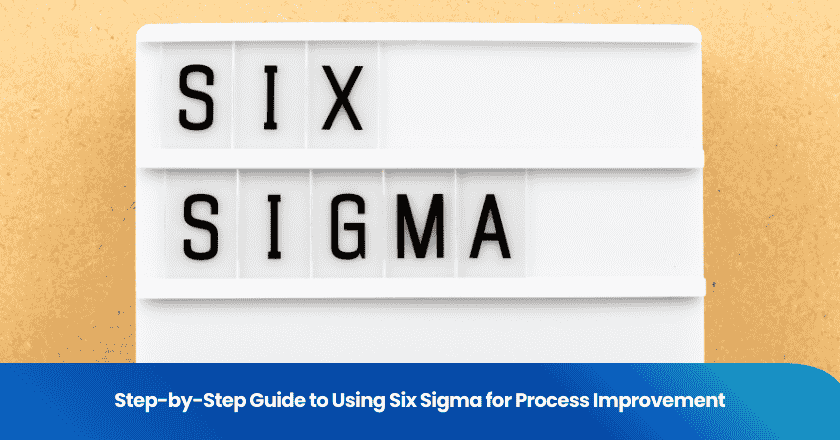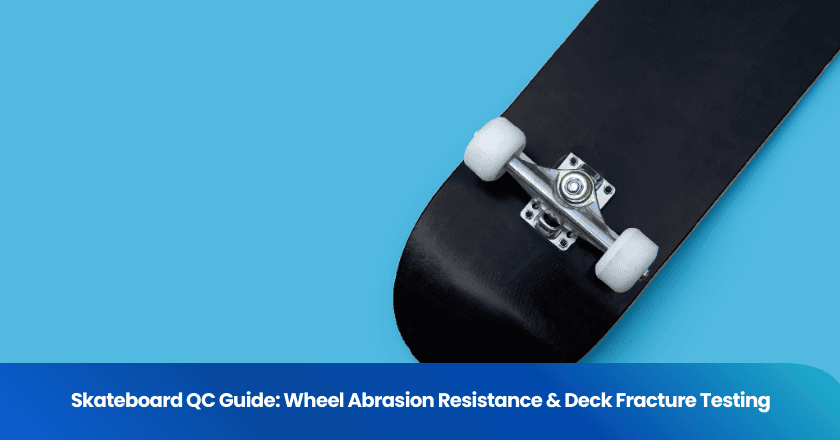
Are you searching for a practical way to boost your team's results? Six sigma for process and quality improvement gives you proven methods to cut waste and raise standards. Many organizations see real gains:
- Productivity in financial institutions rose by up to 150%.
- Over 80% of Fortune 100 companies use Six Sigma.
You can achieve measurable improvements and create lasting change by following a clear, step-by-step approach.
Six Sigma for Process and Quality Improvement
What Is Six Sigma?
You can use six sigma for process and quality improvement to transform how your organization operates. This methodology focuses on reducing defects and minimizing variation in every process. Developed in the mid-1980s at Motorola, Six Sigma builds on earlier quality management practices and statistical process control. Over time, it has evolved to include Lean principles, creating Lean Six Sigma.
Lean Six Sigma doesn’t correct an isolated problem but rather establishes a dynamic of continuous process optimization, by eliminating waste and defects to create a culture of continuous improvement.
Six sigma for process and quality improvement relies on a structured framework called DMAIC:
1. Define: Identify areas needing process improvements.
2. Measure: Collect data to quantify problems and set a baseline.
3. Analyze: Assess data to find root causes.
4. Improve: Implement solutions to eliminate problems.
5. Control: Monitor results to sustain improvements.
Statistical analysis plays a central role. You make decisions based on data, not assumptions. As the process sigma value increases, variation decreases, moving closer to zero defects. Six sigma for process and quality improvement aims for fewer than 3.4 defects per million opportunities, setting a high standard for consistency.
Why Quality Improvement Matters
Quality improvement drives better outcomes for your organization and customers. When you focus on six sigma for process and quality improvement, you exceed customer expectations and deliver added value. Consistent quality improvement leads to higher customer satisfaction and retention rates.
- Customers who perceive high quality become repeat buyers.
- High perceived quality increases retention.
- Quality improvement initiatives predict benefits in satisfaction.
You see these effects in healthcare, manufacturing, and service industries. Patient satisfaction, for example, reflects how well providers meet expectations and correlates with improved health outcomes. In business, quality improvement reduces costs, enhances safety, and boosts profitability. Fewer complications and readmissions lower financial burdens, while improved scores lead to higher reimbursements.
Six sigma for process and quality improvement helps you adjust and improve processes to meet buyer demands. By using data-driven benchmarks, you enhance consistency and customer satisfaction. Quality improvement initiatives create a foundation for long-term success.
DMAIC Methodology
The DMAIC roadmap guides you through a structured improvement approach for process and quality enhancement. Each phase builds on the previous one, helping you reduce variation and defects while driving measurable improvement. You can use the DMAIC approach to tackle improvement projects of any size, ensuring consistent results and lasting change.
Define Phase
You start the DMAIC roadmap by clearly defining the problem and setting the direction for your improvement project.
This phase lays the foundation for successful process improvement.
| Step Number | Step Description | Purpose |
|---|---|---|
| 1 | Define the Problem | Identify key stakeholders and clarify the issue that needs resolution. |
| 2 | Establish Project Scope | Outline process boundaries to maintain focus and prevent scope creep. |
| 3 | Assemble the Right Team | Form a cross-functional team to drive the improvement initiative. |
| 4 | Develop Project Charter | Formalize objectives, success criteria, and key stakeholders. |
You should:
- Develop a problem statement that describes the issue to be solved.
- Determine the goals and scope of the project.
- Identify key stakeholders who are impacted.
- Collect data about current process performance.
- Create process maps to visualize how the process works.
- Obtain the Voice of the Customer (VoC) to define their needs.
- Draft a Project Charter to officially launch the improvement initiative.
Setting clear goals is essential. You can use frameworks like SMART Goals, CLEAR Goals, or OKRs to define what success looks like. Goals provide a broad idea of what you want to accomplish, while objectives specify targets for cost, time, and quality.
Tip: A well-defined project charter keeps your team focused and aligned throughout the improvement journey.
Measure Phase
In the Measure phase, you quantify the current state of the process. This step helps you understand baseline performance and identify areas for improvement.
You should:
- Develop a data collection plan to gather relevant information.
- Use control charts to visualize process variation and performance.
- Apply systematic data collection methods for comprehensive analysis.
- Conduct Measurement System Analysis (MSA) to ensure accuracy and reliability.
You establish a baseline for process performance, which allows you to measure the impact of future improvement efforts. Accurate measurement is critical for identifying the root causes of variation and defects.
Analyze Phase
The Analyze phase focuses on uncovering the root causes of process issues. You use data-driven techniques to pinpoint what drives variation and defects.
| Statistical Tool | Description |
|---|---|
| Hypothesis Testing | Make statistical decisions using experimental data to test effects on defect rates. |
| Regression Analysis | Quantify relationships between variables affecting product failure rates. |
| Design of Experiments (DOE) | Vary input factors to determine their impact on outputs. |
| ANOVA | Evaluate differences between processes or population means to identify causes of variation. |
| Process Mapping | Visualize waste and delays to uncover root causes and improvement opportunities. |
| Pareto Analysis | Focus on the vital few causes that contribute to the majority of problems in quality. |
You should:
- Use hypothesis testing to determine if observed differences in process metrics are statistically significant.
- Apply correlation and regression analysis to identify relationships between variables.
- Monitor process performance over time with control charts to distinguish between common and special cause variation.
These techniques help you target the most impactful areas for improvement, ensuring your efforts address the true drivers of process variation.
Improve Phase
You implement solutions in the Improve phase to eliminate root causes and drive process improvement. This phase transforms analysis into action.
- Engage team members consistently throughout the change process.
- Empower employees to achieve improvement goals.
- Celebrate short-term wins to boost morale and sustain momentum.
- Remain flexible and adapt your implementation plan to unexpected challenges.
- Communicate the organization’s vision regularly to maintain focus.
You can use proven strategies such as:
1. Kaizen: Involve everyone in rapid, incremental improvement, focusing on small changes for long-term results.
2. Lean Manufacturing: Minimize waste and maximize productivity, streamlining operations to improve quality and reduce costs.
Monitor the impact of pilot tests using specific metrics. Identify gaps between expected and actual results to assess effectiveness. Quantify benefits such as cost savings and increased productivity to demonstrate the value of your improvement approach.
Control Phase
The Control phase ensures that process improvements are sustained over time. You establish mechanisms to monitor and maintain gains, preventing the process from reverting to its previous state.
You should:
- Develop standard operating procedures (SOPs) to document new processes.
- Continuously monitor and measure process performance.
- Implement control systems like visual management tools.
- Conduct regular checks and adjustments to maintain stability.
Teams focus on monitoring and sustaining the improvements achieved in previous phases. A control plan oversees the process and implements corrective actions as needed. Continuous monitoring and adjustments are essential for long-term process stability.
Note: The Control phase establishes a culture of ongoing improvement, ensuring that gains are not lost and that the process continues to meet performance standards.
The DMAIC roadmap provides a reliable structure for improvement projects. By following each phase, you drive process improvement, reduce variation, and achieve lasting results.
Six Sigma Tools for Quality
Tools for Define
You begin every Six Sigma project by clarifying the problem and setting clear objectives.
Several tools help you define the scope and direction:
| Tool/Methodology | Purpose |
|---|---|
| DMAIC | Guides you through structured problem-solving. |
| Voice of the Customer | Captures feedback to pinpoint issues affecting satisfaction. |
| Process Mapping | Visualizes workflows to highlight inefficiencies. |
| Control Charts | Tracks process performance over time. |
Process mapping and Voice of the Customer ensure you focus on what matters most. You use these tools to align your team and stakeholders on project goals.
Tools for Measure
You rely on measurement tools to establish a baseline and quantify process performance. Metrics validate the impact of your improvement efforts and guide decision-making.
- Financial metrics measure cost reduction and return on investment.
- Process metrics assess defect rates and yield.
- Operational metrics track productivity and resource utilization.
- Process capability indices (Cp/Cpk) show how well your process meets specifications.
- Sigma index measures defects per million opportunities.
Metrics help you standardize successful projects and replicate them across your organization.
Tools for Analyze
You use analysis tools to uncover root causes and eliminate variation. Statistical methods identify process gaps and focus your efforts.
Root cause analysis, such as the 5 Whys and fishbone diagrams, helps you address the fundamental drivers of defects.
Tools for Improve
You implement solutions using proven improvement tools. The seven basic tools of quality and Lean methods drive measurable gains.
- Kaizen encourages small, continuous changes.
- Lean tools minimize waste and maximize productivity.
- Design of Experiments (DOE) tests multiple variables for optimal results.
- Six Sigma principles guide you to reduce defects and improve consistency.
You empower your team to achieve improvement goals and sustain momentum.
Tools for Control
You maintain quality gains with essential control tools.
These tools help you monitor performance and prevent regression.
| Control Tool | Description | Use Case |
|---|---|---|
| Control Plan | Documents how improvements will be maintained and monitored. | Ensures gains stick in the Control phase. |
| Control Chart | Monitors process stability with control limits. | Sustains improvements and avoids false alarms. |
| FMEA | Identifies and ranks risks to prevent future issues. | Proactively prevents problems in new processes. |
You use control charts and FMEA to ensure your process remains stable and continues to meet quality standards. Control plans document responsibilities and response actions, supporting long-term success.
Continuous Process Improvement
Sustaining Quality Gains
You need to focus on continuous process improvement to maintain the results you achieve. Sustaining quality gains means you do not settle for temporary fixes. You build a culture where everyone looks for ways to improve efficiency and reduce waste. When you involve employees in improvement initiatives, you foster ownership and motivation. Engaged team members feel valued, which leads to higher morale and a positive work environment.
- Continuous process improvement enhances service delivery and product quality, leading to higher customer satisfaction.
- Satisfied customers remain loyal, make repeat purchases, and recommend your business. This drives market share and revenue growth.
- Organizations that practice continuous process improvement adapt quickly to market changes. You gain a competitive edge through consistent enhancements in quality, cost savings, and faster response times.
Tip: Celebrate small wins and recognize contributions. This keeps your team motivated and focused on efficiency.
Data-Driven Decisions
You measure the effectiveness of continuous process improvement using clear metrics. Data helps you understand where you stand and where you need to go. You track efficiency, cost savings, and quality improvements to guide your next steps.
You share these metrics to increase transparency. Everyone understands the impact of improvement efforts. You optimize resources by focusing on what works best. Leaders make informed decisions and prioritize initiatives that deliver the greatest efficiency and quality gains.
Continuous process improvement is not a one-time event. You use data to drive ongoing changes, ensuring your organization stays ahead and delivers consistent value.
Benefits of Six Sigma
Efficiency and Cost Savings
You gain measurable efficiency and cost savings when you apply Six Sigma to your processes. Six Sigma helps you identify inefficiencies and eliminate waste, which improves overall quality. You streamline workflows and reduce labor costs by removing redundant tasks. You also cut material costs by reducing defects and minimizing scrap. Inventory costs drop as you optimize stock levels to match production and demand. You use machinery and facilities more efficiently, which lowers energy bills. Improved process consistency leads to fewer errors and reduces compliance costs.
You see these benefits reflected in higher profitability and improved quality across your organization. Six Sigma uses data-driven decision-making to guide your actions, which ensures you focus on the most impactful areas. You foster a culture of continuous improvement, which empowers employees and enhances engagement.
Tip: When you track cost savings and efficiency gains, you build a strong case for ongoing investment in quality improvement.
Long-Term Quality Improvement
You achieve long-term quality improvement by embedding Six Sigma principles into your daily operations. You use continuous improvement methodologies like Kaizen and Kanban to refine processes and maintain high standards. Technology supports your efforts by providing real-time data tracking and analytics, which help you measure the impact of your quality initiatives. You encourage employee participation in problem-solving and workflow refinement, which strengthens your organizational culture.
- You create a culture of continuous improvement that drives lasting quality gains.
- You use data to monitor progress and identify new opportunities for quality enhancement.
- You empower your team to take ownership of quality, which leads to higher engagement and better results.
You see improvements in customer satisfaction as you deliver consistent quality. You reduce errors and defects, which leads to better compliance and fewer penalties. You build a resilient organization that adapts quickly to changes and maintains high quality standards over time.
You drive real change when you follow the Six Sigma step-by-step approach. Using proven tools and focusing on continuous process improvement leads to lasting results. You build a culture of quality and efficiency. Start applying Six Sigma in your organization to unlock measurable gains.
Ready to take the next step? Explore more resources and begin your journey toward higher quality and performance.
FAQ
What is Six Sigma and how does it improve quality control?
You use six sigma to reduce defects and variation in your processes. This method applies data-driven techniques for quality control. You identify problems, measure performance, analyze root causes, improve processes, and control results. Six sigma projects help you achieve higher customer satisfaction and consistent results.
How do Six Sigma projects impact customer satisfaction?
You increase customer satisfaction by using six sigma projects to deliver reliable products and services. These projects focus on reducing errors and improving quality. You meet customer expectations more consistently, which leads to repeat business and positive feedback.
Can Six Sigma help with operational efficiency?
You improve operational efficiency by applying six sigma principles. You streamline workflows, eliminate waste, and optimize resources. Six sigma projects help you achieve better performance and reduce costs. You see faster turnaround times and higher customer satisfaction.
How do you measure performance in Six Sigma projects?
You measure performance by tracking key metrics such as defect rates, cycle times, and customer satisfaction scores. Six sigma projects use data analysis to monitor progress. You compare results before and after improvements to ensure lasting gains.
Why should you choose Six Sigma for process improvement?
You choose six sigma because it provides a structured approach to process improvement. You use proven tools to identify and solve problems. Six sigma projects drive better quality control, higher customer satisfaction, and improved performance across your organization.
Grow your business with TradeAider Service
Click the button below to directly enter the TradeAider Service System. The simple steps from booking and payment to receiving reports are easy to operate.



